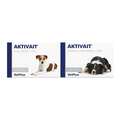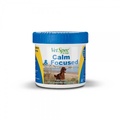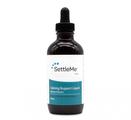This is one of the most common behavioural disorders in our pets, in fact an estimated 14% of pet dogs suffer from the condition. Separation anxiety is a fear that is caused by separation or the threat of separation from family members. It can be really frustrating to control but with a good behavioural plan in place you can eventually get on top of the issue. We at Viovet have made a guide of how to spot the problem and help your pet through as best you can.
What are the signs of Separation Anxiety?
The signs are often of severe stress or anxiety which can be some or all of the following:
-
Vocalisation (crying)
-
Destructive behaviour
-
Excessive salivation
-
Inability to rest or settle
-
Reduce appetite
-
Compulsive behaviours (pacing, anything that is repetitive and abnormal)
-
Excessive responses upon return of family member
These behaviours start to occur as soon as the anxiety is triggered. The most common trigger is the physical separation itself, for example when an owner leaves. However subtle behavioural cues that a family member is going to leave can trigger this too. Such as putting on your shoes or going to the door.
How do I approach the problem?
There are a few approaches you can try. The first, which is by far the best approach, is behavioural therapy.
-
Behavioural therapy
This involves teaching your pet that being left alone is nothing to fear and desensitising your dog to the anxiety. There are a few key steps to this:
Manage excessive attachment - Your dog will not be able to cope with you being away if they cannot be independant. Encourage your dog to use a playmat or area designated for play, put toys here and get your dog to use this location. Using food dispensing toys like KONGs can help encourage independence here too. Give your dog treats or affection when they use this area in a calm manner (sitting or lying down).
Change the exit routine - if the separation anxiety is severe then it will take time to desensitise your pet to the triggers. Initially it may be best to mix up the leaving routine completely. Leave by a different door, park your car away from the normal spot or pick up your keys/shoes from a different location.
Keeping noise levels as constant as possible is helpful. Perhaps consider a radio with classical music being left on, it’s important that this is on whilst you are in the house too so it does not become a trigger in itself.
Desensitisation - this should be a slow process and carried out very carefully. If rushed then the anxiety can actually worsen:
-
Firstly simulate departures and keep them short. Start the leaving process and only go as far as your dog can handle. Your dog must stay calm for the period that you have left for, as soon as the anxiety starts to occur then return to them. Ideally you should leave a video camera in the room your dog is in so you know how long this period is.
-
The first actual exit may last from seconds to minutes depending on how quickly your dog becomes fearful. As you train your dog to handle this procedure you can increase the time period.
-
If there is any end to your dog’s calm behavior and signs of the separation anxiety start to occur then it’s really important to stop the process and return to them. The length of time you can leave will gradually increase but only with slow training over time.
Do not scold bad behaviour - if returning to a house that your dog has damaged or soiled it’s really important to not scold them for this. It is very unlikely your dog will link the damage to the punishment and more likely they will link this with the separation itself. This will only worsen the anxiety.
2. Comforting aids
Special toys and treats your dog can have whilst you’re away can distract them from the fear. We have a wide range of toys on our website that would be suitable. This is only safe in dogs that are not at risk of destroying and eating their toys though.
Getting a dog sitter or a walker to take your dog out when you are away is a good temporary solution too. This helps break up the length of time they are separated.
Creating a ‘safe place’ for your dog can help a lot. This should be in a room that your dog is comfortable in and include a place to hide and rest. Our guide on Creating a Den for firework season has transferable advice you can follow.
3. Supplements and medications
Over the counter calmers are great to help keep your dog relaxed whilst they overcome the anxiety. Our own brand SettleMe is a good oral calmer. Diffusers or sprays such as Pet Remedy or Adaptil can be used instead of or alongside this.
Medications are sometimes required. If the anxiety is severe and destructive then you should see your vet so they can recommend appropriate products which will improve the outcome of behavioural therapy. You can purchase these through our website alongside a written prescription, more information on this process can be found here.
You got this!
Written by: Dr. Nick Garside BVetMed MRCVS








